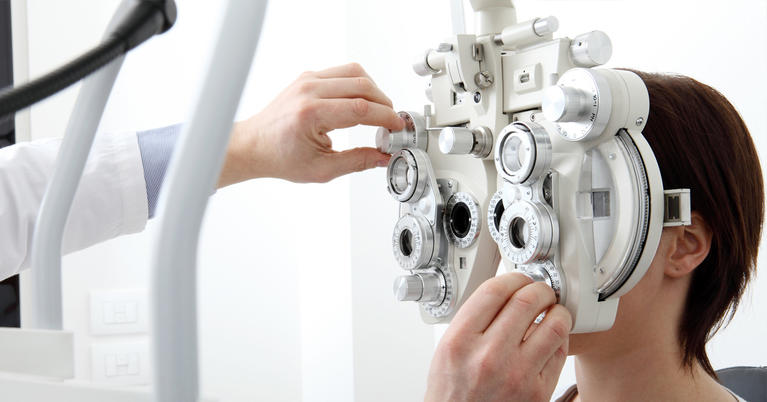The Pros and Disadvantages of Various Refractive Surgical Procedures for Boosted Eyecare

LASIK Surgery
LASIK surgery is a typically carried out refractive procedure that aims to fix vision problems such as nearsightedness, astigmatism, and farsightedness. During the procedure, a slim flap is developed on the cornea, and a laser is made use of to reshape the underlying tissue, correcting the refractive error.
One of the primary benefits of LASIK surgical procedure is the rapid renovation in vision experienced by numerous individuals. It is important for people thinking about LASIK surgery to go through a thorough examination by an eye treatment professional to identify if they are appropriate prospects for the procedure.
PRK Procedure
The PRK treatment, also understood as Photorefractive Keratectomy, is a type of refractive surgical treatment that intends to deal with vision issues similar to LASIK surgical treatment. Unlike LASIK, which entails creating a flap in the cornea, PRK deals with the surface layer of the cornea. Throughout the PRK treatment, the external layer of the cornea, called the epithelium, is removed to enable improving of the underlying corneal tissue with an excimer laser. This reshaping aids to correct refractive errors such as farsightedness, astigmatism, and nearsightedness.
One of the advantages of PRK over LASIK is that it eliminates the threat of flap-related issues because no flap is created throughout the surgical treatment. In spite of the longer healing period, PRK can be a suitable alternative for people seeking vision improvement surgical procedure.
SMILE Surgery
An advanced refractive surgical procedure method acquiring appeal in the field of ophthalmology is SMILE Surgery. Little Incision Lenticule Removal (SMILE) is a minimally invasive treatment that corrects vision by reshaping the cornea using a femtosecond laser. Unlike standard LASIK surgery, SMILE Surgical treatment includes developing a little laceration in the cornea to draw out a lenticule, which causes less interruption to the corneal framework and possibly faster recuperation times.
One of the main benefits of SMILE Surgical procedure is its capability to deal with nearsightedness (nearsightedness) and astigmatism with high precision, causing excellent visual outcomes for patients. The minimally invasive nature of the treatment additionally reduces the danger of complications such as dry eye disorder, making it a favorable choice for people looking for refractive surgical procedure.

LASEK Method
Having actually discovered the benefits and considerations of SMILE Surgical procedure, an additional noteworthy refractive surgical treatment strategy worth analyzing is the LASEK Method. LASEK, which represents Laser-Assisted Subepithelial Keratectomy, is a kind of laser eye surgery that aims to correct refractive errors such as myopia (nearsightedness), hyperopia (farsightedness), and astigmatism.
Unlike LASIK, LASEK does not entail developing a corneal flap. Rather, throughout a LASEK procedure, the cosmetic surgeon uses a diluted alcohol solution to loosen up the slim external layer of the cornea, understood as the epithelium.
Among the key benefits of LASEK is that it can be suitable for individuals with slim corneas that may not be excellent prospects for LASIK. Additionally, LASEK generally results in very little post-operative discomfort and a quicker recuperation time compared to PRK. However, the aesthetic recovery procedure with LASEK may be somewhat longer than with LASIK.
Implantable Call Lenses
Implantable Contact Lenses supply a long-lasting vision correction option for people seeking a choice to conventional call lenses or glasses. These lenses, also referred to as phakic intraocular lenses, are surgically placed right into the eye to correct refractive mistakes such as nearsightedness (nearsightedness), hyperopia (farsightedness), and astigmatism. neurologist Andalusia. Unlike standard get in touch with lenses that sit on the surface of the eye, implantable contact lenses function within the eye itself, providing clear vision without the demand for daily upkeep or elimination
One of the crucial benefits of implantable contact lenses is their permanence. As soon as put, they can remain in the eye indefinitely, supplying stable and constant vision correction. Additionally, these lenses can be an exceptional alternative for individuals who are bad candidates for laser eye surgical procedure or who choose a relatively easy to fix vision improvement treatment.
However, implantable get in touch with lenses do bring some dangers, consisting of the possibility for cataracts or increased eye pressure. It is important for people considering this alternative to speak with an eye care specialist to establish if implantable contact lenses are the check out here best option for their certain needs and eye health.
Conclusion
In final thought, each kind of refractive surgical procedure has its very own advantages and drawbacks. LASIK surgical treatment is prominent for its fast healing time, while PRK useful reference treatment may appropriate for clients with thin corneas. SMILE surgery offers marginal pain throughout the procedure, but LASEK technique might have a longer recovery process. Implantable contact lenses offer an option for those who are not ideal candidates for typical surgical procedures. Clients ought to speak with their eye treatment supplier to figure out the most effective option for their specific requirements.

Overall, SMILE Surgical treatment presents an appealing option for people looking to enhance their vision with refractive surgery.